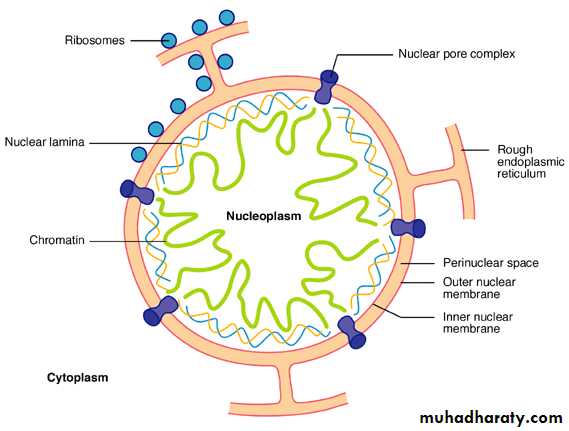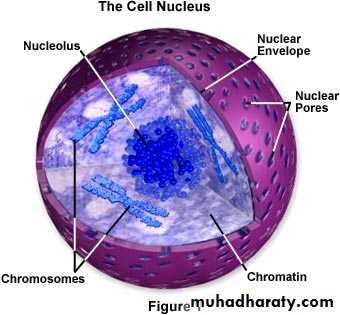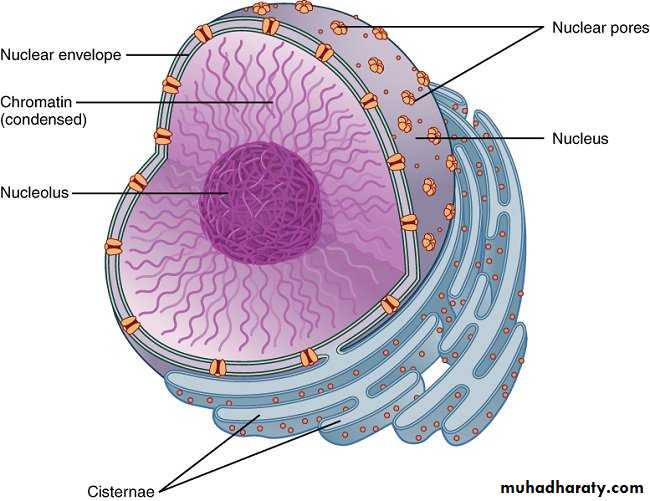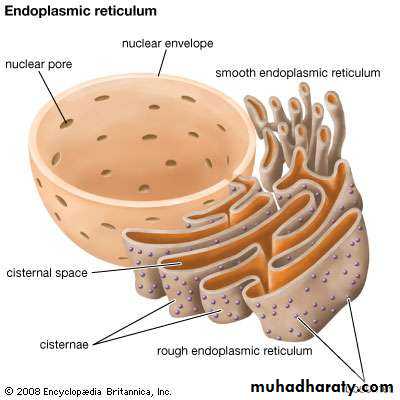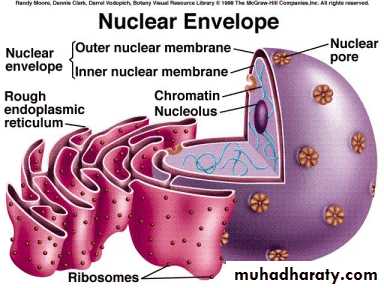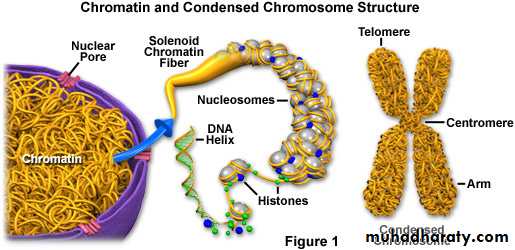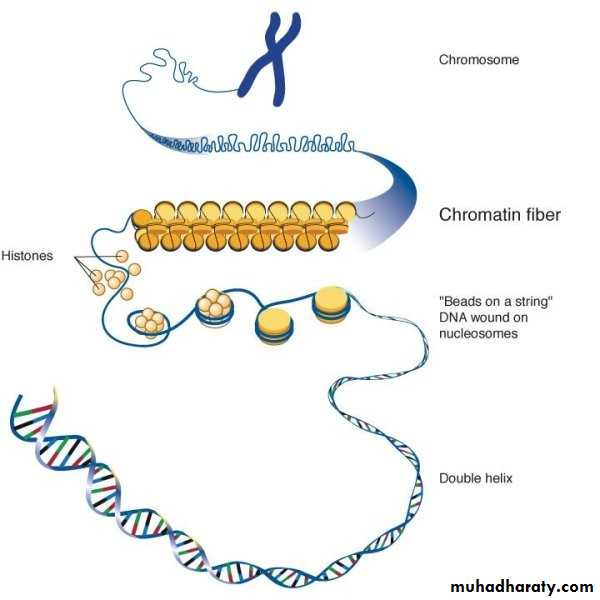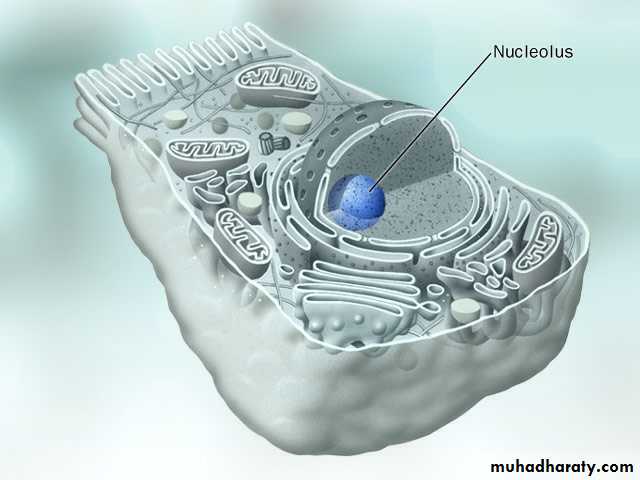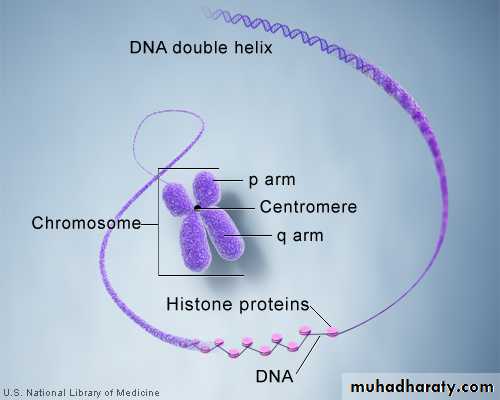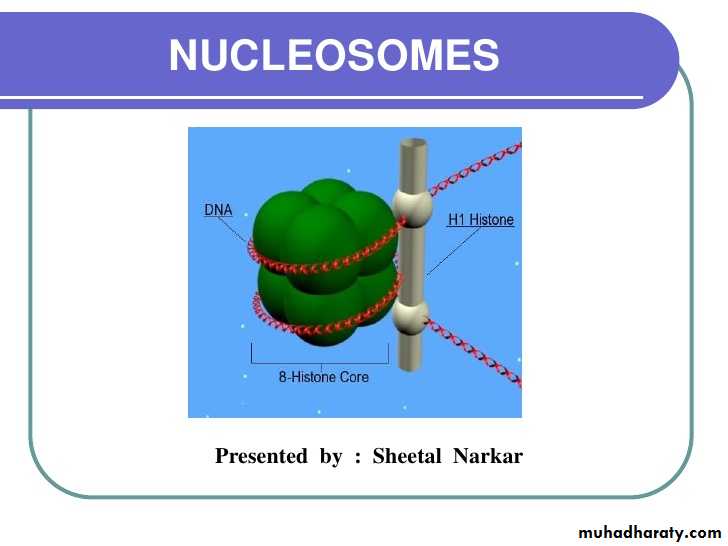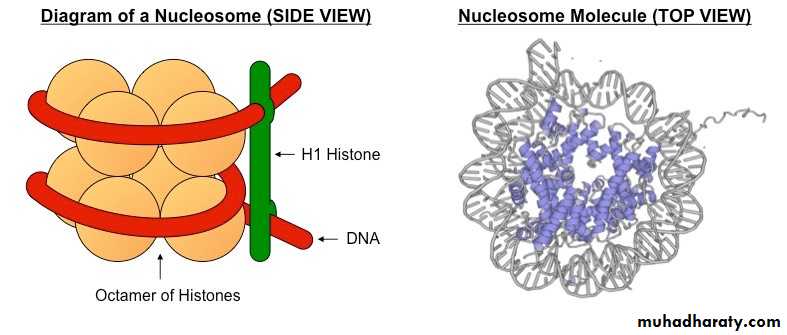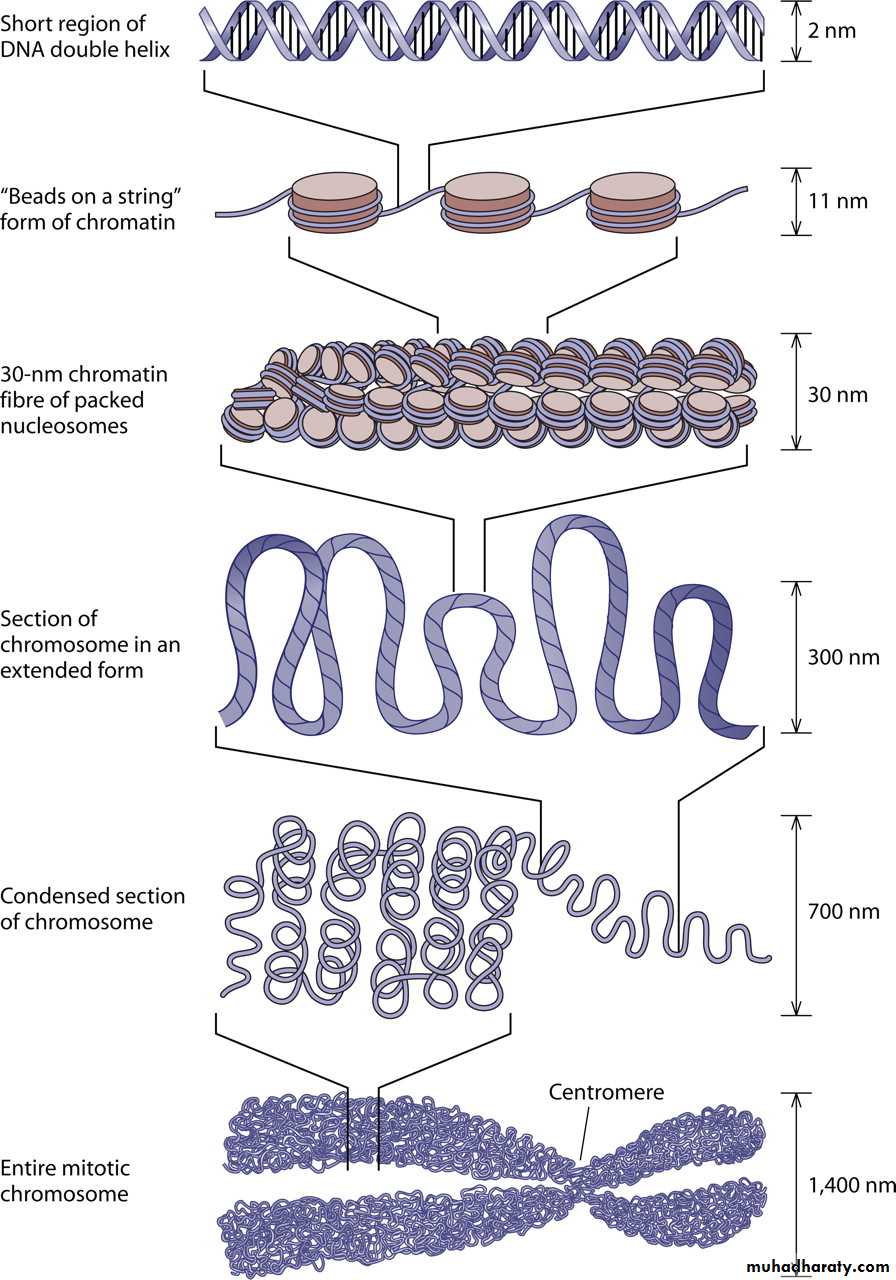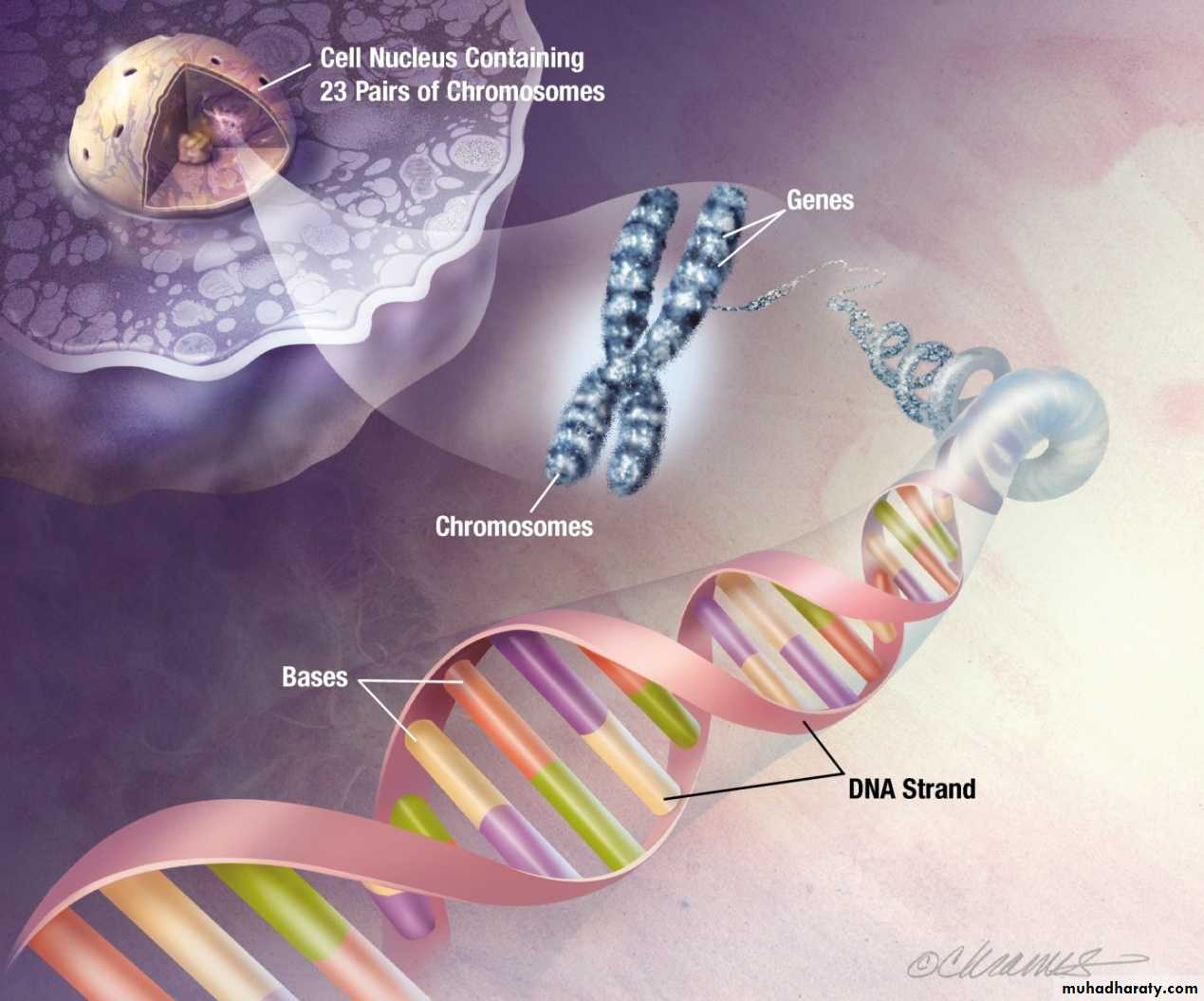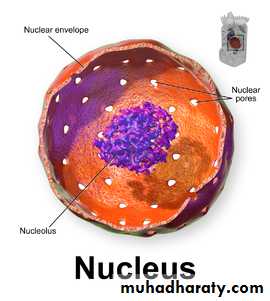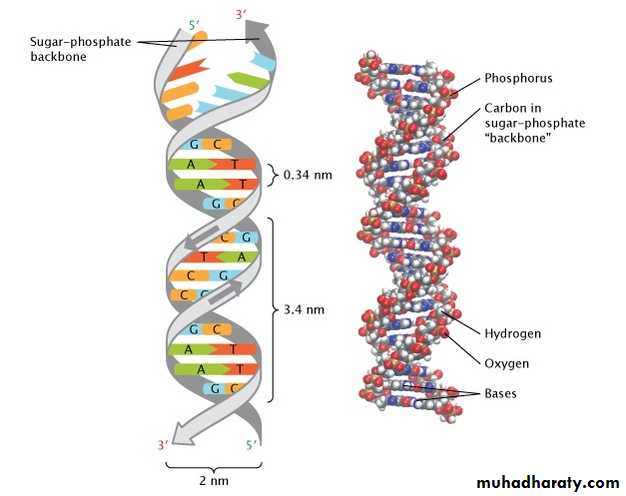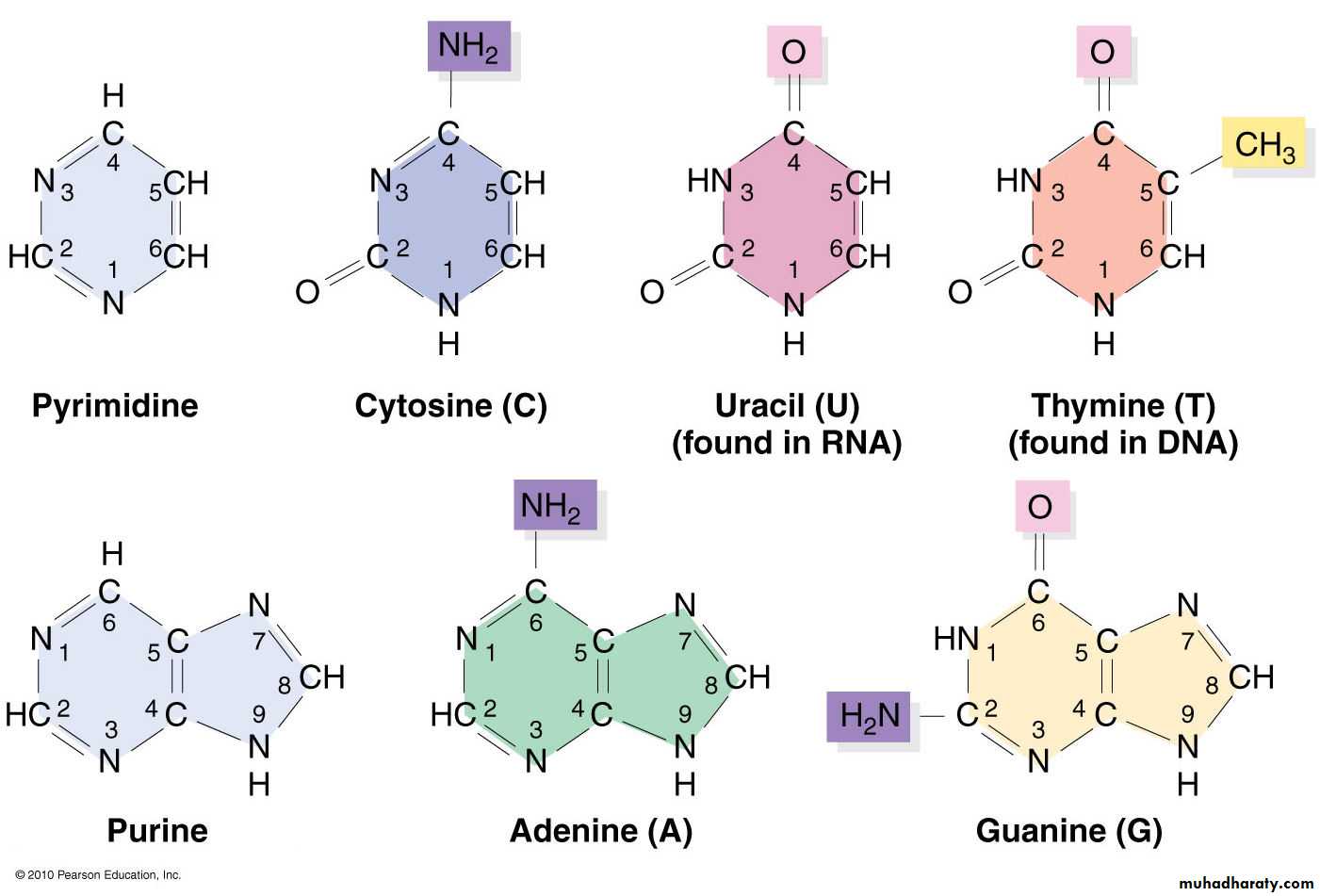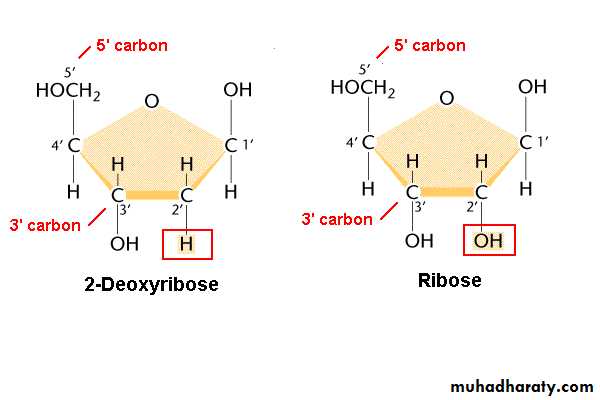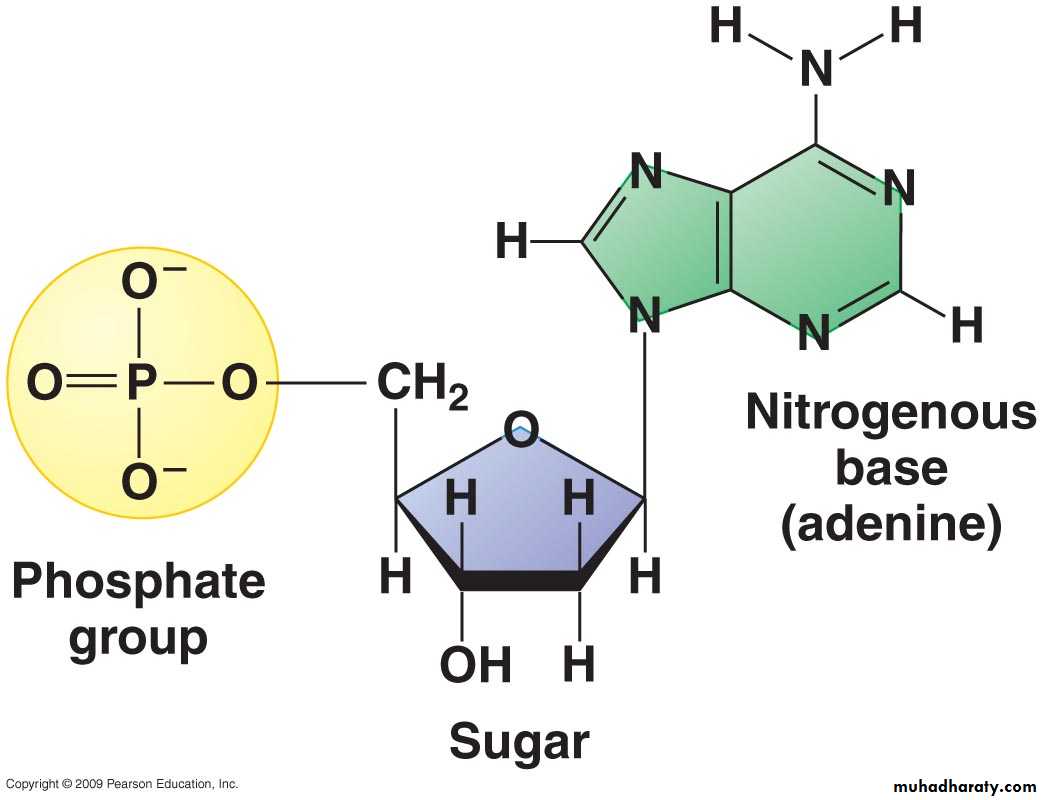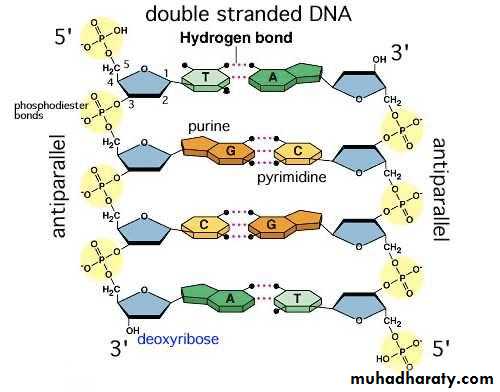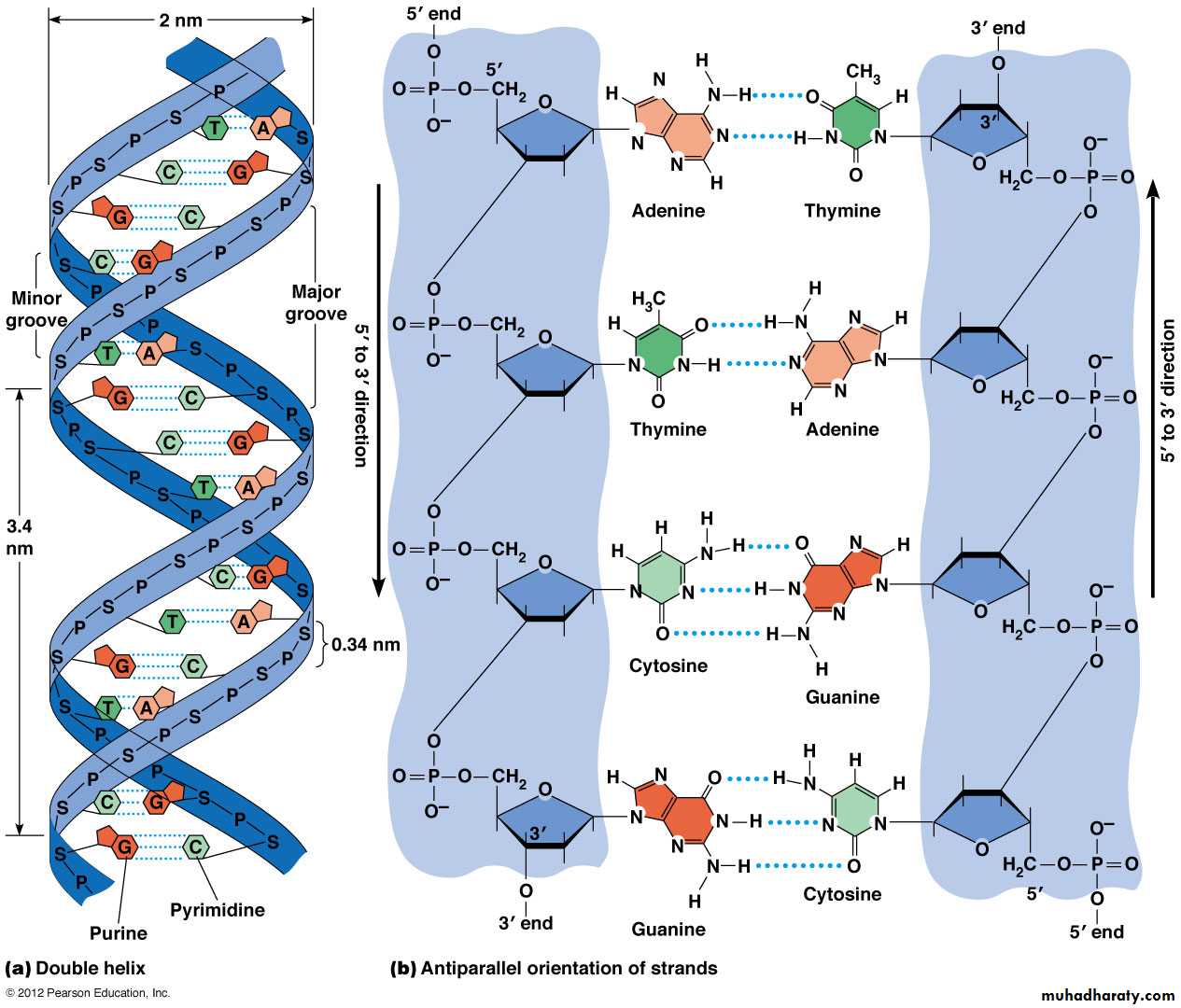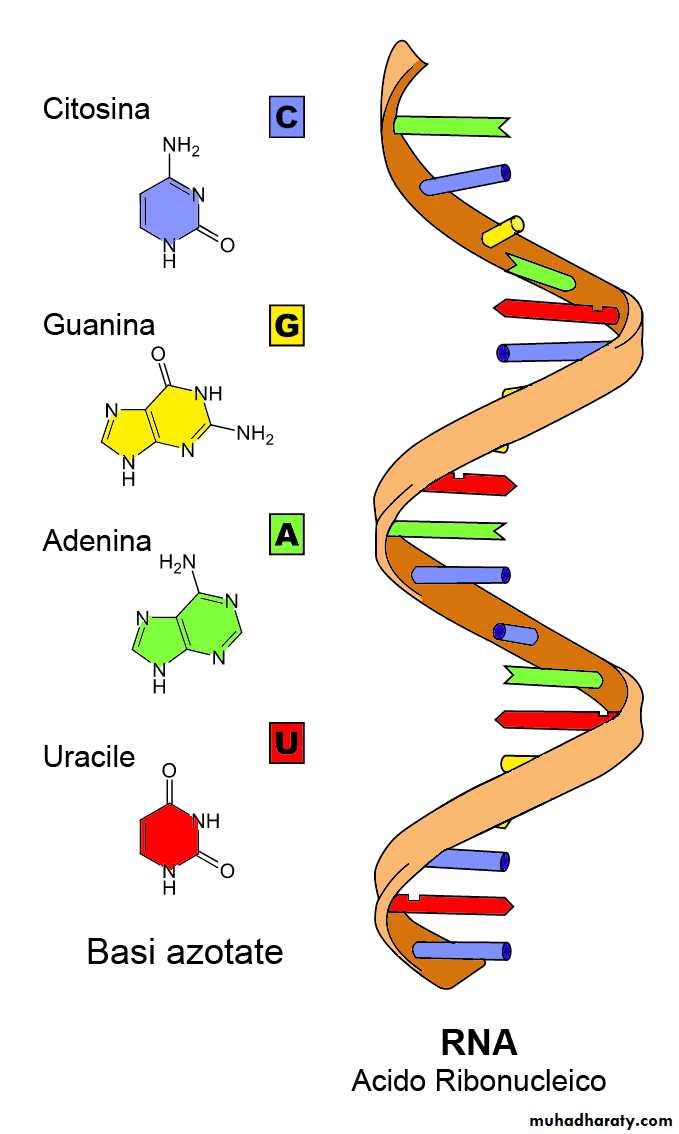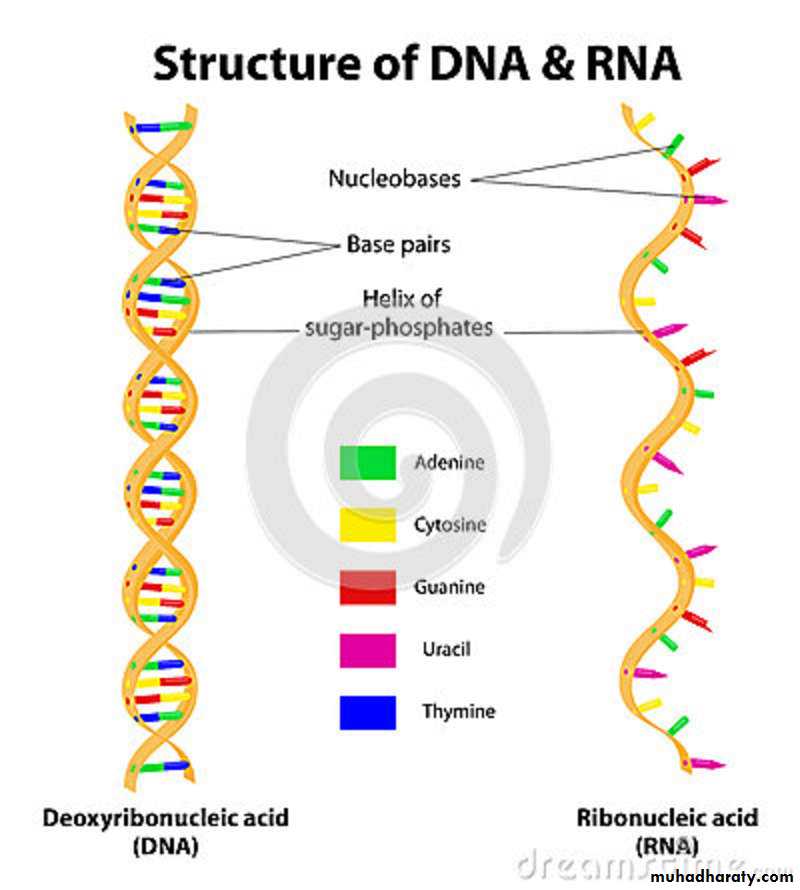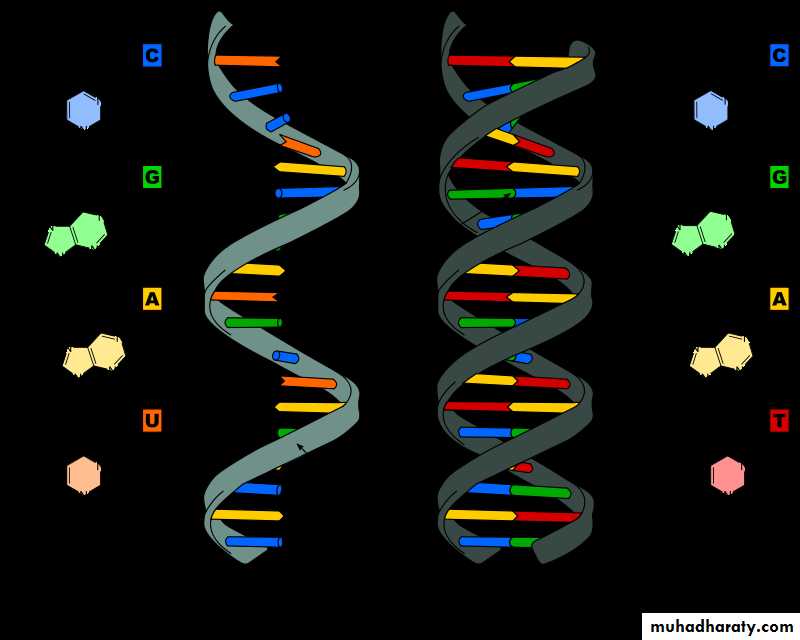بسم الله الرحمن الرحيم
The Nucleus
The main distinguishing feature of the eukaryotic cell is the nucleus,, it has a diameter of about 5 µm, depending on cell type, Nucleus shape mostly depends on the shape of cells. Basic shape is spherical, but it may be oval, flattened, irregular or fragmented.
It is an important structure because it's function which is to contain the genetic material that determines the characteristics of the body's cells and their metabolic functioning. Enclosing this structure are two concentric lipid bilayer membranes: the inner membrane and the outer membrane. These membranes make up the nuclear envelope.
Most of eukaryotic cells contain only one nucleus. Some cells lose nucleus in the process of differentiation (e.g. mammalian erythrocytes). On the other hand, some cells of plants or Protista may have two or more nuclei.
Nucleus is the control center of the cell.
The nucleus consist of the followings:
• 1- nuclear envelope. 2-nucleoplasm. 3-chromatin. 4-nucleolus.Nuclear envelope:
The nucleus is separated from the cytoplasm by a double membrane, known as the nuclear envelope, this envelope consist of two layers, outer layer is the layer of protein fibers called the nuclear lamina which associated with the inner layer.Functions of nuclear lamina:
1- help to maintain the shape of the nucleus.2- organizes chromatin by providing chromatin attachment sites.
3-it may play as funnel substances toward or away from the nuclear pores.
The nuclear envelope has nuclear pores of sufficient size (100 nm) to permit the passage of proteins into the nucleus and ribosomal subunits out of the nucleus.
The inner nuclear membrane encloses the nucleoplasm, and is covered by the nuclear lamina, a mesh of intermediate filaments which stabilizes the nuclear membrane as well as involved in chromatin function and entire expression. It is connected to the outer membrane by nuclear pores which penetrate the membranes.
Nuclear pores provide active transport of substances from the nucleus to the cytoplasm (especially RNA subunits) and from the cytoplasm to the nucleus (e.g. transport of histones, nutrients and regulatory proteins).
While the two membranes and the endoplasmic reticulum are linked, and the outer later has selective permeability feature as cell membrane.
Nucleoplasm
Is an semi-fluid medium which chromatin immersed in it, it contain several material like phosphorus compounds, sugar or CHO and nitrogenic compounds, other compounds presented are nucleoprotein, and it's a protein discovered in the nucleus for first time and therefore called by this name" nucleoproteins" are conjugated proteins resulted from nucleic acid connected with protein.Chromatin:
Chromatin is a complex of macromolecules composed of DNA, RNA, and protein, which is found inside the nucleus of eukaryotic cells. Chromatin exists in two forms: heterochromatin (condensed) and euchromatin (extended). The primary protein components of chromatin are histones that help to organize DNA into “bead-like” structures called nucleosomes by providing a base on which the DNA can be enfolded around.
A nucleosome consists of 147 base pairs of DNA that is enfolded around a set of 8 histones called an octomer. The nucleosome can be further folded to produce the chromatin fiber. Chromatin fibers are coiled and condensed to form chromosomes. Chromatin makes it possible for a number of cell processes to occur including DNA replication, transcription, DNA repair, genetic recombination, and cell division.
People often confuse these three terms: chromatin, chromosome, and chromatid. While all of those three structures are composed of DNA and proteins within the nucleus, each is uniquely defined. As mentioned above, chromatin is composed of DNA and histones that are packaged into thin, stringy fibers. The chromatin undergoes further condensation to form the chromosome.
So the chromatin is a lower order of DNA organization, while chromosomes are the higher order of DNA organization.
During the cell division processes of mitosis and meiosis, chromosomes replicate to ensure that each new daughter cell receives the correct number of chromosomes.
A duplicated chromosome is double-stranded. The two strands are identical and connected at a central region called the centromere.
A chromatid is either of the two strands of a replicated chromosome.
Chromatids connected by a centromere are called sister chromatids.
At the end of cell division, sister chromatids separate and become daughter chromosomes in the newly formed daughter cells.
Nucleolus:
is a round body located inside the nucleus of a eukaryotic cell. It is not surrounded by a membrane but sits in the nucleus. The nucleolus makes ribosomal subunits from proteins and ribosomal RNA, also known as rRNA.It then sends the subunits out to the rest of the cell where they combine into complete ribosomes. Ribosomes make proteins; therefore, the nucleolus plays a vital role in making proteins in the cell.
Chromosome:
Collectively, DNA and proteins are called chromatin. Human have 46 chromosome that occur in 23 pairs. 22 of these pairs are called autosome. All of these chromosome are found in both male and female. One pair of chromosome is called sex chromosome because this pairs contain the genes that control gender.Make up the 23rd pair, determining sex of person
All males have an X and YAll females have two X chromosomes
Human karyotype “painted” using fluorescent DNA probes. These mitotic chromosomes each consist of a pair of sister chromatids joined at their centromeres. The images of the homologous chromosome pairs (e.g., 2 copies of chromosome 1) have been lined up next to each other.
Nucleic acids structure
• Nucleic acids are large polymers consisting of repeating nucleotide units.
• Each nucleotide contains one phosphate group, one pentose or deoxypentose sugar, and one purine or pyrimidine base.• In DNA the sugar is D-2-deoxyribose; in RNA the sugar is D-ribose.
• In DNA the purine bases are adenine (A) and guanine (G), and the pyrimidine bases are thymine (T) and cytosine (C).
• The repeating structure of polynucleotides involves alternating sugar and phosphate residues, with phosphodiester bonds linking the 3'-hydroxyl group of one nucleotide sugar to the 5'- hydroxyl group of the next nucleotide sugar. A purine or pyrimidine base is linked at the 1'-carbon atom of each sugar group and projects from the repeating sugar-phosphate backbone.
• dsDNA is helical, and the two strands in the helix are antiparallel. The double helix is stabilized by hydrogen bonds between purine and pyrimidine bases on the opposite strands.

